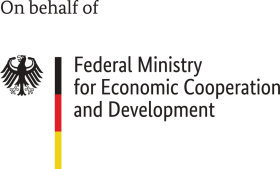Mini-grids for productive use in Namibia and Uganda

Neu-Ulm University of Applied Sciences has investigated the potential of mini-grids for productive use with partner institutions in Namibia and Uganda. In the interview, Professor Elmar Steurer talks about the role and design of mini-grids, electricity tariffs and the next steps with his partners. What surprised him was that people in both countries perceive mini-grids very differently.
Namibia and Uganda are not only very different in terms of population density. What do they have in common when it comes to supplying energy to rural areas through mini-grids?
Professor Elmar Steurer: In both Namibia and Uganda there are numerous rural regions where people have no access to electricity, in Uganda for example on the many islands in Lake Victoria. Both governments use mini-grids for rural supply. However, with very different approaches.
How do they differ?
Professor Elmar Steurer: In Namibia, electricity supply is centralised. There are uniform tariffs that only differ by a few cents for private households and businesses. In Uganda, the supply is much more decentralised. The biggest difference is that the Namibian government gives priority to supply through electricity grids. The Ugandan government, on the other hand, sees island grids as an effective means of quickly supplying rural areas with electricity.
How does the population view mini-grids?
Professor Elmar Steurer: I was very surprised, because the Namibian population has a much more negative view of mini-grids than the Ugandan population. While the people in East Africa see mini-grids as a good solution, there are also private investors and the main focus is on the supply of energy, the people in the two towns of Tsumkwe in the north-east and Uutsathima in the north-west of Namibia see mini-grids as a second-class energy supply.
Why?
Professor Elmar Steurer: Those connected to the power grid can run all kinds of productive machinery, even if the grid in Namibia breaks down more often. However, mini-grids, as electricity suppliers design them, always mean limited power capacity. Off-grids are limited to 10-20 amps. Many productive applications are therefore not possible. These disadvantages are in the foreground in Namibia. The operation of a welding machine is a good example of this. This is because a mini-grid is considered to create value if power-intensive welding equipment can be operated with it.
What would be the alternative?
Professor Elmar Steurer: In Namibia, we started investigating possible productive uses of energy in rural areas with the support of Green Citizen Energy. For this, however, the mini-grids would not have to be designed for the originally planned capacity, but about 50 to 100 per cent above it.
What is the situation in Uganda?
Professor Elmar Steurer: The Ugandan government also wants to expand its electricity grid. At the same time, it sees mini-grids as a natural form of electrification. The population, businesses and private investors, on the other hand, pay less attention to the price of energy, because the benefits, especially in the agricultural sector, sometimes significantly exceed the costs of energy. A solar drip irrigation system does not need much energy and if I can keep my fruits fresh in a cold hub, it pays off in case of doubt.
What are the next steps with your partners?
Professor Elmar Steurer: The cooperation in Namibia with Namibia Energy Institute (NEI) and Uganda Christian University (UCU) was very intensive and good. We are striving for a long-term partnership here. With both institutions, we want to develop country-specific entrepreneurship concepts and corresponding training curricula. With the UCU, we are thinking about setting up an Incubation Centre for education and training in the field of renewable energies and their productive use. In Namibia, we want to focus on technology transfer in renewables in the first step and their productive use in the second step.
How do you look at mini-grids and their importance today?
Professor Elmar Steurer: They will become even more important. Renewable energies are by far the cheapest energy source and especially a country like Namibia, but also Uganda, have great potentials here and want to use them. In a few years, energy storage will become cheaper and mini-grids more economical.
The two HNU projects funded by GBE
Together with the Ugandan Christian University (UCU), HNU researched the role mini-grids could play in supplying islands and the role of tariff and financial models. In Namibia, HNU worked with the Namibia Energy Institute (NEI) to investigate how mini-grids could be operated economically and how entrepreneurship could be supported.





